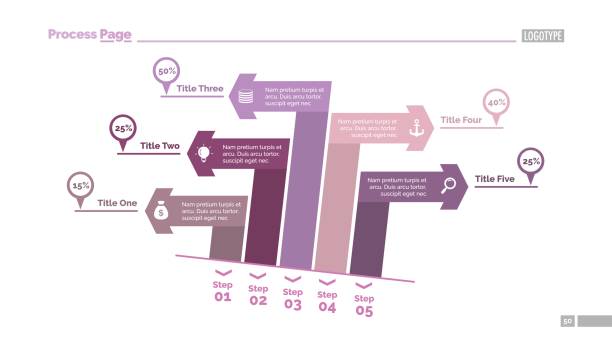What Social Media Platform Pays the Most Content creators across the globe are discovering that social media isn’t just about connecting with friends—it’s become a legitimate pathway to financial independence. With billions of users scrolling through platforms daily, the opportunity to monetize your creativity and expertise has never been greater.
The question isn’t whether you can make money on social media anymore; it’s which platform will give you the highest return on your time and effort. From YouTube’s ad revenue powerhouse to TikTok’s viral potential and emerging platforms like Substack, each offers unique advantages for different types of creators.
Understanding the monetization landscape requires looking beyond simple dollar amounts. The highest paying platform for a gaming streamer might be completely different from what works best for a beauty influencer or business consultant. Success depends on your audience, content style, and long-term goals.
This comprehensive guide breaks down earning potential across major and emerging platforms, examines real creator success stories, and provides actionable strategies to maximize your social media income. Whether you’re just starting out or looking to diversify your revenue streams, you’ll discover which platforms align best with your monetization goals.
Factors That Determine Your Social Media Earnings
Audience Size and Engagement Quality
Raw follower counts tell only part of the story. Platforms increasingly reward creators who generate meaningful engagement over those with passive audiences. A micro-influencer with 50,000 highly engaged followers often earns more than someone with 500,000 inactive followers.
Engagement rates vary significantly across platforms. TikTok typically sees engagement rates between 5-9%, while Instagram averages 1-3%. This difference affects how brands value partnerships and how platform algorithms distribute your content to potential monetization opportunities.
Content Quality and Niche Selection
High-quality, consistent content builds trust with both audiences and potential sponsors. Creators who establish themselves as experts in specific niches—whether that’s sustainable fashion, cryptocurrency, or home renovation—command higher rates for partnerships and attract more loyal subscribers.
Certain niches consistently outperform others in monetization potential. Finance, technology, health and wellness, and business content typically generate higher advertising rates and sponsorship deals compared to general entertainment content.
Available Monetization Methods
Different platforms offer varying revenue streams, from direct audience payments to advertising revenue shares. Understanding each platform’s monetization toolkit helps you choose where to focus your efforts for maximum financial return.
Platform-Specific Algorithm Advantages
Each platform’s algorithm affects your earning potential differently. YouTube’s search-friendly algorithm can generate passive income for years from evergreen content, while TikTok’s discovery-focused system offers rapid growth potential but requires consistent posting to maintain visibility.
Platform-by-Platform Earning Breakdown

YouTube: The Monetization Powerhouse
YouTube remains the gold standard for content creator earnings, offering the most diverse and scalable monetization options. The platform’s mature ecosystem supports everything from advertising revenue to direct fan funding.
Primary Monetization Methods:
- Ad Revenue: YouTube shares 55% of ad revenue with creators, while keeping 45%
- Channel Memberships: Monthly recurring payments from subscribers ($4.99+ per month)
- Super Chat and Super Thanks: Direct donations during live streams and on videos
- YouTube Shorts Fund: Performance-based payments for short-form content
- Brand Partnerships: Sponsored content integration
Monetization Requirements:
- 1,000 subscribers minimum
- 4,000 watch hours in the past 12 months
- AdSense account connection
- Compliance with community guidelines
Earning Potential Examples:
PewDiePie has generated over $15 million annually through diverse YouTube revenue streams, while MrBeast’s elaborate productions reportedly earn $3-5 million per month through ads, sponsorships, and merchandise. Even smaller creators can earn substantial income—channels with 100,000 subscribers typically generate $500-2,000 monthly from ad revenue alone.
YouTube’s long-term sustainability stems from its evergreen content potential. Well-optimized videos can generate passive income for years, making it ideal for creators focused on building lasting revenue streams.
Instagram: Visual Storytelling Monetization

Instagram’s visual-first platform excels at lifestyle and product-focused monetization, particularly through influencer marketing and direct sales integration.
Primary Monetization Methods:
- Sponsored Posts: Brand partnerships for feed and story content
- Affiliate Marketing: Commission-based product promotion
- Instagram Shopping: Direct product sales through posts and stories
- Reels Play Bonus: Performance payments for Reels content
- Live Badges: Fan support during live broadcasts
Monetization Requirements:
- No official follower minimum for brand partnerships
- 10,000 followers for Live Badges
- Business account for Shopping features
- Compliance with commerce policies
Earning Potential Examples:
Beauty mogul Huda Kattan leverages her 50+ million followers to promote her cosmetics line, generating millions in direct sales revenue. Fashion influencer Chiara Ferragni commands $20,000+ per sponsored post while also driving sales to her fashion brand.
Micro-influencers with 10,000-100,000 followers typically earn $100-1,000 per sponsored post, depending on engagement rates and niche relevance. Fashion, beauty, and lifestyle niches generally command premium rates.
TikTok: Viral Growth Potential
TikTok’s explosive growth and algorithm-driven discovery make it excellent for rapid audience building, though monetization options remain more limited compared to established platforms.
Primary Monetization Methods:
- Creator Fund: Direct payments based on video performance
- TikTok Pulse: Revenue sharing for top-performing content
- Live Gifts: Virtual gifts from viewers during live streams
- Brand Partnerships: Sponsored content collaborations
- Affiliate Marketing: Product promotion through links
Monetization Requirements:
- 10,000 followers for Creator Fund
- 18+ years old
- 100,000 video views in past 30 days
- 100,000 followers for TikTok Pulse
- Compliance with community guidelines
Earning Potential Examples:
Charli D’Amelio has earned millions through brand partnerships with companies like Dunkin’ and Morphe, while Addison Rae’s diversified approach includes sponsored content, merchandise, and her own beauty line.
However, TikTok’s Creator Fund payments are notably low—often $0.02-0.04 per 1,000 views. Most creators focus on using TikTok for audience building while monetizing through external partnerships and cross-platform promotion.
Facebook: Community-Focused Revenue

Facebook’s monetization options center around community building and video content, with particular strength in long-form video advertising revenue.
Primary Monetization Methods:
- In-Stream Ads: Revenue sharing for video content
- Fan Subscriptions: Monthly supporter payments
- Stars: Virtual gifts during live streams
- Branded Content: Sponsored post partnerships
- Facebook Groups: Paid membership communities
Monetization Requirements:
- 10,000 followers for In-Stream Ads
- 600,000 total minutes viewed in past 60 days
- 250+ returning viewers for Fan Subscriptions
- Compliance with monetization policies
Facebook’s aging demographic skews toward higher-income users, making it valuable for creators in business, finance, and lifestyle niches targeting older audiences.
Twitch: Live Streaming Revenue Leader
Twitch dominates live streaming monetization with a subscription-based model that creates predictable recurring revenue for successful streamers.
Primary Monetization Methods:
- Subscriptions: Monthly recurring payments ($4.99, $9.99, $24.99 tiers)
- Bits: Virtual currency donations from viewers
- Ad Revenue: Pre-roll and mid-roll advertising
- Sponsorships: Brand partnership deals
- Merchandise Sales: Integrated store functionality
Monetization Requirements:
- Affiliate status: 50 followers, 500 total minutes broadcast, 7 unique broadcast days, 3+ concurrent viewers
- Partner status: Higher requirements but better revenue sharing
Earning Potential Examples:
Top streamers like Ninja and Pokimane earn millions annually through subscriptions, donations, and sponsorship deals. Mid-tier streamers with 1,000-5,000 average viewers typically generate $3,000-15,000 monthly.
Twitch’s community-focused model creates strong creator-audience relationships, leading to higher sustainability and predictable income streams compared to algorithm-dependent platforms.
Emerging Platform Opportunities
Patreon: Creator-First Monetization
Patreon revolutionizes creator monetization by facilitating direct fan support through subscription tiers, making it platform-agnostic and creator-controlled.
Key Features:
- Monthly recurring subscriptions
- Tiered reward systems
- Direct creator-fan relationship
- Integration with existing content platforms
Successful Patreon creators often earn $1,000-10,000+ monthly by offering exclusive content, behind-the-scenes access, and community interaction to paying subscribers.
Substack: Newsletter Monetization
Substack transforms newsletter writing into a viable income source, particularly for writers, journalists, and thought leaders in specific niches.
Monetization Model:
- Paid subscription newsletters
- 90% revenue retention (10% platform fee)
- Direct subscriber relationships
- Email-based audience ownership
Top Substack writers earn six-figure annual incomes from paid newsletter subscriptions, with political and business newsletters commanding premium subscription rates.
Kick and Rumble: Alternative Streaming Platforms
These emerging platforms offer creator-friendly revenue sharing and fewer content restrictions, attracting creators seeking alternatives to established platforms.
Both platforms offer higher revenue sharing percentages and more lenient content policies, making them attractive for creators who’ve faced limitations on traditional platforms.
Comparative Platform Analysis

Highest Immediate Earning Potential
- YouTube – Diverse revenue streams and scalable growth
- Twitch – Recurring subscription revenue model
- Instagram – High-value brand partnerships
- Patreon – Direct fan monetization
- TikTok – Rapid growth but limited direct monetization
Long-Term Sustainability Rankings
- YouTube – Evergreen content and diverse revenue
- Patreon – Direct fan support independence
- Substack – Owned audience relationships
- Twitch – Strong community connections
- Instagram – Algorithm dependency risks
Best for Different Creator Types
- Video Creators: YouTube, TikTok
- Live Streamers: Twitch, YouTube Live
- Visual Content: Instagram, Pinterest
- Writers: Substack, LinkedIn
- Business/Professional: LinkedIn, YouTube
Micro-Influencer Success Strategies
Micro-influencers with 10,000-100,000 followers often achieve higher engagement rates and more authentic audience connections than mega-influencers, leading to valuable monetization opportunities.
Effective Micro-Influencer Tactics
Local Business Partnerships: Regional creators partner with local restaurants, fitness studios, and service providers for authentic sponsored content that resonates with community-based audiences.
Niche Authority Building: Focusing on specific topics like sustainable living, pet care, or budget travel creates expert positioning that commands premium partnership rates despite smaller follower counts.
Authentic Product Integration: Micro-influencers succeed by seamlessly integrating product recommendations into genuine lifestyle content rather than obvious advertising.
Community Engagement: Responding to comments, hosting live Q&As, and creating user-generated content campaigns build loyal audiences more likely to support monetization efforts.
Success Story Examples
A 25,000-follower food blogger in Austin generates $2,000 monthly by partnering with local restaurants and promoting kitchen products through authentic recipe content.
A fitness micro-influencer with 40,000 followers earns $3,500 monthly through workout equipment partnerships and her own digital training program sales.
Maximizing Your Social Media Earnings
Building a Strong Personal Brand
Consistent visual identity, authentic voice, and clear value proposition across platforms creates recognition and trust that translates into higher monetization rates.
Brand Development Elements:
- Consistent color schemes and visual style
- Clear content pillars and messaging
- Professional photography and graphics
- Authentic personality expression
Audience Engagement Strategies
Active community management significantly impacts earning potential. Creators who consistently respond to comments, ask questions, and create two-way conversations build stronger relationships that support monetization efforts.
Engagement Tactics:
- Regular story polls and Q&As
- User-generated content campaigns
- Live streaming and real-time interaction
- Community challenges and contests
Revenue Stream Diversification
Successful creators rarely depend on single monetization methods. Combining platform revenue sharing, brand partnerships, affiliate marketing, and direct product sales creates stability and maximizes earning potential.
Diversification Examples:
- YouTube ad revenue + Patreon subscriptions + merchandise sales
- Instagram sponsored posts + affiliate marketing + digital course sales
- TikTok audience building + cross-platform monetization
Staying Current with Platform Changes
Social media platforms continuously update algorithms, monetization policies, and feature availability. Successful creators adapt quickly to maintain and grow their earning potential.
Legal and Tax Considerations
Income Reporting Requirements
Social media earnings constitute taxable income that must be reported to tax authorities. This includes direct platform payments, brand partnership fees, affiliate commissions, and merchandise sales.
Documentation Needs:
- Platform payment records
- Brand partnership contracts and payments
- Expense receipts for content creation
- Business registration documentation
Disclosure Requirements
Federal Trade Commission guidelines require clear disclosure of sponsored content, affiliate relationships, and gifted products. Failure to comply can result in legal penalties and damaged creator reputation.
Disclosure Best Practices:
- Use #ad or #sponsored hashtags prominently
- Include verbal disclosures in video content
- Disclose affiliate relationships clearly
- Mark gifted products appropriately
Business Structure Considerations
As earnings grow, creators often benefit from establishing formal business entities for tax optimization and liability protection. Consulting with tax and legal professionals helps navigate these decisions.
Future Trends in Social Media Monetization
Emerging Technology Integration
Artificial intelligence tools increasingly help creators optimize content, automate posting schedules, and analyze performance metrics to maximize earning potential across platforms.
Direct Creator-Fan Relationships
Platforms continue developing features that facilitate direct creator-audience financial relationships, reducing dependence on traditional advertising models and brand partnerships.
Cross-Platform Integration
Successful creators increasingly use multi-platform strategies, leveraging each platform’s strengths while building owned audiences through email lists and direct communication channels.
Niche Platform Growth
Specialized platforms for specific industries and interests create new monetization opportunities for creators who serve particular communities and professional niches.
Frequently Asked Questions
What is the best social media platform for making money?
YouTube offers the highest overall earning potential due to its diverse monetization options and evergreen content benefits. However, the best platform depends on your content type, audience, and goals. Visual creators might succeed better on Instagram, while live streamers often earn more on Twitch.
How much can I earn on social media?
Earnings vary dramatically based on platform, follower count, engagement rates, and monetization methods. Micro-influencers (10K-100K followers) typically earn $500-5,000 monthly, while successful full-time creators can generate $10,000-100,000+ monthly across multiple revenue streams.
What are the requirements for monetizing a social media account?
Requirements vary by platform. YouTube requires 1,000 subscribers and 4,000 watch hours, TikTok’s Creator Fund needs 10,000 followers, and Instagram has no official minimums for brand partnerships. Most platforms also require compliance with community guidelines and age restrictions.
Is it possible to make a living from social media?
Yes, many creators earn full-time incomes from social media, but it requires consistent effort, strategic planning, and often 12-18 months to build sustainable revenue. Successful creators typically diversify across multiple platforms and revenue streams rather than relying on single income sources.
What are the risks of relying on social media for income?
Platform algorithm changes, policy updates, and account restrictions can significantly impact earnings. Successful creators mitigate risks by diversifying across platforms, building email lists, and developing multiple revenue streams including products and services they own directly.
How can I increase my earnings on social media?
Focus on consistent, high-quality content creation, actively engage with your audience, collaborate with other creators, diversify your monetization methods, and stay current with platform updates and trends. Building expertise in a specific niche often leads to higher-value partnerships.
Which platform offers the most diverse monetization options?
YouTube provides the most comprehensive monetization toolkit, including ad revenue, memberships, Super Chat, sponsorships, and merchandise integration. This diversity helps creators build multiple income streams within a single platform ecosystem.
How do micro-influencers make money on social media?
Micro-influencers succeed through authentic brand partnerships, affiliate marketing, local business collaborations, and by building strong community engagement. Their higher engagement rates often make them more valuable to brands than larger influencers with passive audiences.
What are the long-term trends in social media monetization?
Trends include increased direct creator-fan payment systems, AI-powered content optimization, cross-platform integration tools, and specialized niche platforms. The industry is moving toward creator ownership of audience relationships and reduced dependence on traditional advertising models.
Are there specific niches that are more profitable on social media?
Finance, technology, health and wellness, business education, and luxury lifestyle content typically command higher advertising rates and sponsorship fees. However, any niche can be profitable with the right audience engagement and strategic approach to monetization.
Your Path to Social Media Success Starts Now
The landscape of social media monetization continues evolving, creating new opportunities for creators willing to adapt and experiment with different platforms and strategies. While YouTube currently offers the highest overall earning potential through its mature monetization ecosystem, the best platform for you depends on your unique content style, audience, and long-term goals.
Success in social media monetization requires patience, consistency, and strategic thinking. Start by choosing one or two platforms that align with your content strengths, focus on building genuine audience relationships, and gradually expand your monetization methods as your following grows.
Remember that sustainable social media income comes from providing real value to your audience, whether through entertainment, education, or inspiration. The creators who build lasting businesses understand that monetization follows audience trust—not the other way around.
Ready to turn your social media presence into a revenue stream? Start by analyzing your current content and audience engagement, then choose the platform that best matches your strengths and begin implementing the strategies outlined in this guide.
What’s your experience with social media monetization? Share your success stories and questions in the comments below—your insights could help other creators on their journey to social media success.
